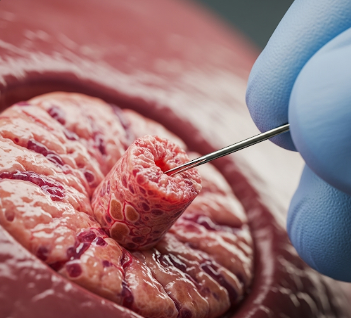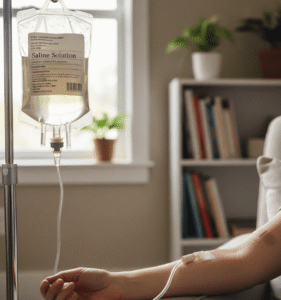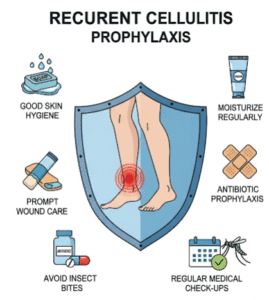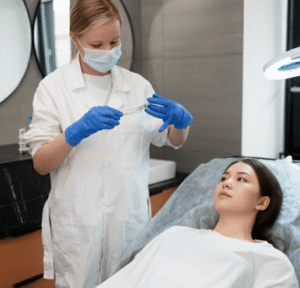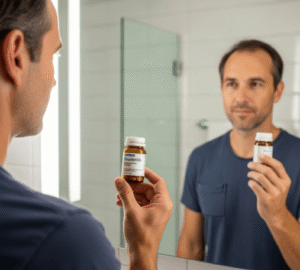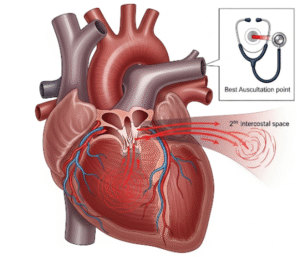Overview
A biopsy is a medical procedure in which a small sample of tissue, cells, or fluid is removed from the body for laboratory examination. It is one of the most important diagnostic tools in modern medicine, providing definitive information about cancer, infections, inflammatory conditions, and other diseases.
Biopsies can be performed on virtually any part of the body, including:
- ➤ Skin
- ➤ Breast
- ➤ Liver
- ➤ Lungs
- ➤ Kidneys
- ➤ Prostate
- ➤ Bone marrow
Key benefits:
- Accurate diagnosis of cancer or other abnormalities.
- Guides treatment decisions, including surgery, medication, or monitoring.
- Helps determine disease prognosis and staging.
In South Korea, biopsies are performed in top hospitals and specialized laboratories with advanced imaging and pathology services, ensuring high accuracy, minimal complications, and fast results.
Why It’s Done
A biopsy is performed when abnormal tissue or cells are suspected, particularly when imaging or clinical examination is inconclusive.
Common indications include:
- ➤ Suspicious lumps or masses (e.g., breast, thyroid, lymph nodes).
- ➤ Detection of cancer or precancerous changes.
- ➤ Chronic inflammatory or autoimmune conditions (e.g., liver biopsy for hepatitis).
- ➤ Infections that require tissue sampling for culture or microscopic analysis.
- ➤ Organ transplant monitoring to detect rejection.
Benefits for patients:
- ✔️ Provides definitive diagnosis instead of just suspicion.
- ✔️ Helps tailor treatment plans based on tissue pathology.
- ✔️ Can prevent unnecessary surgery by distinguishing benign from malignant tissue.
Alternatives
Although biopsy is the gold standard for tissue diagnosis, some alternatives may be used in specific scenarios:
- ➤ Imaging alone: Ultrasound, CT, or MRI may suggest a diagnosis but cannot confirm malignancy.
- ➤ Blood tests and tumor markers: Can indicate risk but do not provide tissue confirmation.
- ➤ Fine-needle aspiration cytology (FNAC): Less invasive method to sample cells but may be less accurate for certain conditions.
- ➤ Observation and follow-up: For small, stable lesions that do not pose immediate risk.
Key point: Only a biopsy provides definitive tissue diagnosis, especially for cancer and complex diseases.
Preparation
Preparation depends on the type of biopsy and location.
General steps include:
- ✅ Medical history and physical examination: Review allergies, medications, and underlying health conditions.
- ✅ Imaging studies: Ultrasound, CT, MRI, or X-ray may guide the biopsy.
- ✅ Medication adjustments: Blood thinners may need to be paused to reduce bleeding risk.
- ✅ Fasting: Required for procedures under general anesthesia.
- ✅ Consent and counseling: Patients are informed about procedure, risks, and recovery.
- ✅ Sterile preparation: Skin cleansing and, if needed, local anesthesia.
Important: Patients with bleeding disorders or severe infections may require special precautions.
How It’s Done
Biopsy procedures vary based on location, tissue type, and required accuracy. Common types include:
1. Needle Biopsy
- Fine-needle aspiration (FNA): Thin needle extracts cells for cytology.
- Core needle biopsy: Larger needle removes a tissue core for histology.
- Used for breast, thyroid, liver, kidney, or lymph nodes.
2. Incisional or Excisional Biopsy
- Incisional: Removes a small portion of tissue for analysis.
- Excisional: Removes the entire lesion.
- Common for skin, soft tissue, or lymph node biopsies.
3. Endoscopic Biopsy
- Tissue is obtained via endoscopy for internal organs (e.g., stomach, colon, bronchi).
- Biopsy forceps are inserted through the endoscope to remove tissue samples.
4. Image-guided Biopsy
- Uses ultrasound, CT, or MRI for precise sampling of deep tissues (e.g., liver, lung, or bone).
- Minimizes damage to surrounding structures.
5. Bone Marrow Biopsy
- Needle used to extract bone marrow from the pelvis for hematologic evaluation.
Procedure duration: 10–60 minutes depending on type and location.
Hospital stay: Usually outpatient; some procedures may require overnight monitoring.
Pain level:
- Mild discomfort or pressure at the biopsy site.
- Local anesthesia is usually sufficient; general anesthesia may be used for complex or deep biopsies.
Recovery
Recovery is generally quick and uncomplicated, but it depends on the type and site of biopsy.
Immediate recovery:
- Pressure dressing or bandage applied to prevent bleeding.
- Rest for a few hours post-procedure.
- Pain managed with over-the-counter analgesics.
Short-term recovery (1–7 days):
- Mild swelling, bruising, or tenderness at the site is normal.
- Avoid strenuous activities or heavy lifting.
- Follow-up to monitor for infection or hematoma.
Long-term recovery:
- Tissue samples analyzed and pathology results communicated within days to weeks.
- If cancer is detected, further treatment planning is done.
- Rarely, a repeat biopsy may be required if sample is insufficient.
Possible Complications
Biopsy is generally safe, but potential risks include:
- ⚠️ Bleeding – usually mild; may require compression.
- ⚠️ Infection – rare, treated with antibiotics if occurs.
- ⚠️ Pain or discomfort – temporary and manageable with analgesics.
- ⚠️ Damage to surrounding structures – nerve or organ injury is rare.
- ⚠️ Insufficient tissue sample – may necessitate a repeat biopsy.
In Korea, hospitals use advanced imaging, sterile techniques, and expert pathology teams, reducing complication rates and ensuring accurate diagnosis.
Treatment Options in Korea
South Korea provides high-quality biopsy services across public and private hospitals.
Key features:
- 🏥 State-of-the-art imaging and guidance for precise sampling.
- 🏥 Experienced pathologists and multidisciplinary teams for accurate diagnosis.
- 🏥 Wide range of biopsy types: Needle, incisional, excisional, endoscopic, and image-guided.
- 🏥 Integration with treatment planning: Rapid communication with oncologists, surgeons, and other specialists.
- 🏥 Minimally invasive techniques reducing hospital stay and recovery time.
Hospitals and centers:
- Samsung Medical Center, Seoul – oncology and surgical biopsies
- Asan Medical Center, Seoul – image-guided liver and lung biopsies
- Severance Hospital, Seoul – bone marrow, endoscopic, and soft tissue biopsies
- CHA Bundang Medical Center – multidisciplinary biopsy and pathology services
Highlights of biopsy in Korea:
- ✔️ Ensures accurate diagnosis for cancer and other diseases.
- ✔️ Performed safely with minimal discomfort.
- ✔️ Enables timely treatment planning.
- ✔️ High standards of hygiene, technology, and pathology expertise.
Highlights
- ➤ Biopsy is a critical diagnostic procedure to confirm cancer, infections, or inflammatory diseases.
- ➤ Multiple techniques are available: needle, incisional, excisional, endoscopic, and image-guided.
- ➤ Preparation and sterile technique are essential to ensure safety and accuracy.
- ➤ Recovery is generally quick, with mild pain, bruising, or swelling.
- ➤ Complications are rare, including bleeding, infection, or insufficient tissue.
- ➤ South Korea offers advanced biopsy services, combining precision, safety, and integration with treatment planning.
- ➤ Timely diagnosis through biopsy enables targeted and effective medical care.

